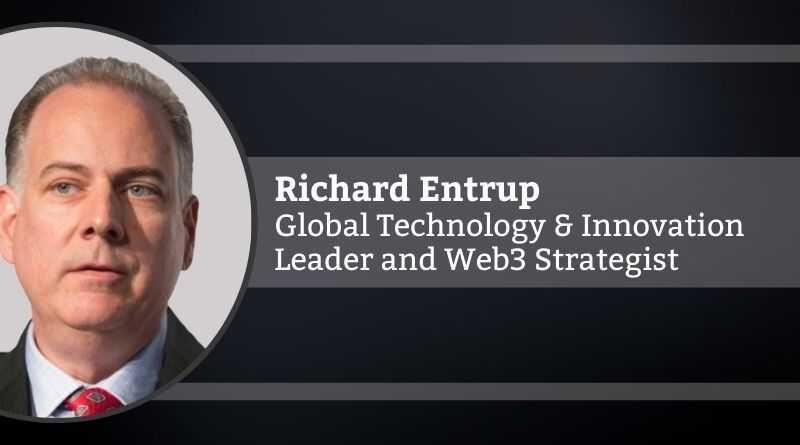Web3 – A Primer for senior leaders tasked with driving Digital Transformation
By Richard Entrup, Global Technology & Innovation Leader, Startup and VC Advisor, and Web3 Strategist
I often get asked this question from many tech leaders, non-tech execs, board members, VC/PE firms, and others in my network – what does all this Web3 stuff mean to companies, and how to best approach getting in?
The short answer:
Approach Web3 as you would any other digital marketing and customer engagement strategy, with the same expectations and targets for success: engagement, conversion, retention, and ultimately revenue. Web3 is another opportunity to create frictionless, sticky, and fun engagement for your customers and also attract new ones. That’s it. Don’t overcomplicate or overanalyze it, as many did with the Internet, circa 1992, when many thought it was a bubble and would soon pass.
Quick primer on Web3:
Web1: (1991-2004) Internet was open protocols, static pages hosted on ISP servers, banner ads, page views, frames/tables, heavy text-based content, one-way comms.
Web2: (2004-current) User-generated and dynamic content, social media (FB, IG, Twitter, etc.), podcasts, blogs/wikis, interactive ads, web voting, TV/OTT, XML/RSS, AJAX/JavaScript, APIs, centralized.
Web3: (2014-current) Blockchain (Smart Contracts Distributed Ledger, tokens, crypto, DAOs, DeFi), shared not owned data, AI/ML, AR/VR, 3D immersive graphics, behavioral ads, decentralized, and democratized.
Having personally witnessed the transition from a no Internet world to a globally connected Internet world, I hear the same negative comments being slurred about how Web3 is another bubble, how they don’t get it, what’s it all mean, it’s a scam, it’s for money laundering, a Ponzi scheme, etc. I even had a recent live talk/panel with seasoned senior IT leaders go down that path of how our children are already on social media and gaming too much and how the metaverse will only exasperate the issue of people not connecting IRL. Well, I’m a can-do/let’s get it done forward thinker and early adopter, focused on why and how we can make it work for competitive advantage, enhancing the customer experience, branding, and ultimately growing revenue. I also predict that not having a Metaverse and a Web3 engagement strategy in the next 3-5 years may be like not having a website or a social media account today.
The Bottom Line:
Define the job to be done and the problem you’re solving for, first.
Like every other good business strategy, you need to define your requirements, build or buy/contract your expert technology and community building resources, ID your strategic partners, define your customer personas and expected business outcomes, then have at it! But remember, the NFT drop, or building your metaverse, or launching your token or DAO, etc., are not the end goals. They are only the beginning of this entirely new way to engage with your audience and support their desire to connect and be part of a community. Community is the lifeblood of the crypto, NFT, metaverse, and Web3 crowd. It’s not optional but a core requirement. You will need to grow an audience on Discord and Twitter as well as Facebook and Instagram, and you need to engage often and provide value by supporting the community. It would help if you gave as much as you receive from the community. Remember those blockchain tenets of decentralization and democratization.
Finally, partner with the CMO, CDO, and anyone in your org tasked with digital marketing, consumer engagement, CX, etc., and save the tech speak for engineering. At the end of the day, the business wants to know how they can utilize the technology for engagement, conversion, retention, and ultimately, revenue.

